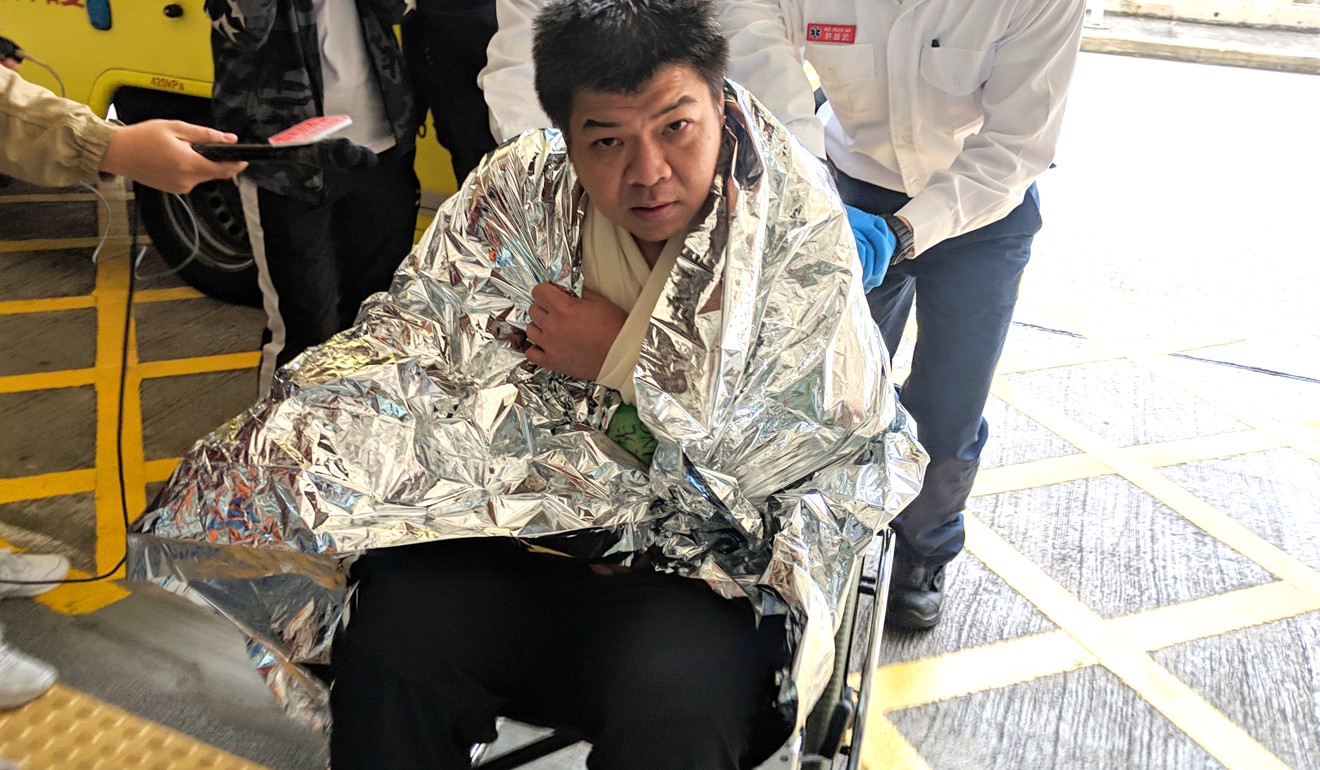
Oil tanker that caught fire off Hong Kong’s Lamma Island will need several days to cool down before it can be towed away
- Blaze on Vietnam-registered oil and chemical tanker Aulac Fortune broke out soon after 11.30am, killing at least one person, with two others still missing
- Fire Services Department’s division commander of marine and diving, Yiu Men-yeung says no risk of vessel sinking
The blaze on the Vietnam-registered oil and chemical tanker Aulac Fortune broke out about one nautical mile south of Lamma Island soon after 11.30am, killing at least one person, with two others still missing. Three fireboats, a government helicopter and a marine police vessel were sent to the scene.
The oil tanker was tilted 30 degrees on Tuesday evening according to Yiu Men-yeung, the Fire Services Department’s division commander of marine and diving, who added there was no risk of the vessel sinking.
“We will meet the Marine Department to discuss how to stabilise the vessel and allow investigators on board to find the cause of the fire,” Yiu said.
Another police source said the temperature of the vessel was too high for officers to take further action on board.
“The boat should stay there a couple of days,” the source said.
Yiu said the mission was not easy as his men could not be sure whether there were any dangerous goods or flammables stored on board. Another veteran firefighter with 30 years’ experience said putting out a fire on an oil tanker was not easy and could be dangerous.
“Depending on the situation, the two major fireboats spray foam to coat the tanker and suppress combustion. Other fireboats use water jets to cool the vessel,” the insider said, on condition of anonymity.
“It has taken [firefighters overseas] several days or even a few weeks to extinguish oil tanker fires in worst-case scenarios. It is definitely not easy.”
From Lamma crash to Queen Elizabeth: Hong Kong’s worst maritime accidents
Emergency workers rescued 23 other sailors who had either fallen or jumped into the sea to escape the blaze. Four were taken to Ruttonjee Hospital in Wan Chai.
The insider said that before making a strategy, the rescue commander would have to speak to the ship’s captain to get a full picture of the chemicals and crew on board, as well as the tanker’s structure. The commander would also need to assess the risk of sending firefighters aboard.

“Apart from the risk of explosions, don’t forget that an oil tanker is made of metal and the temperature is extremely high after several hours of fire. The temperature itself can cause more fires. Tanker compartments are also complicated and narrow,” the insider said.
The high temperature itself can cause more blazes. Tanker compartments are also complicated and narrow
“All these pose great dangers to firefighters going on board. We normally do not take such risks if no one is trapped inside the vessel.”
The source added such a fire did not allow divers to go into the water for a rescue mission, as oil leaks could cause fires on water.
“The divers would die immediately [if that happened]. We normally sail small boats to rescue people on water and send divers later, only when the situation allows.”
The Fire and Ambulance Services Academy in Tseung Kwan O has an aquatic incident training area, with an oil tanker simulator, where new recruits and serving firefighters train for these situations.

